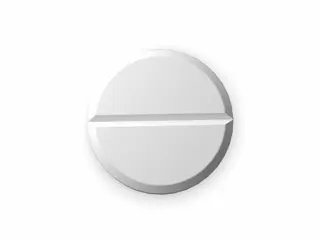Buy Clonidine UK
| Package | Dosage | Price | Price per Dose | |
|---|---|---|---|---|
| Dosage: 100mcg | ||||
| 270 pill | 100mcg | £303.82 | £1.12 | |
| 180 pill | 100mcg | £223.71 | £1.24 | |
| 120 pill | 100mcg | £163.14 | £1.36 | |
| 90 pill | 100mcg | £134.81 | £1.49 | |
| 60 pill | 100mcg | £102.57 | £1.71 | |

Clonidine Description
Overview of Clonidine
Clonidine is a medication primarily used to treat high blood pressure, also known as hypertension. It belongs to a class of drugs called centrally acting adrenergic agents, which work by affecting the central nervous system. By stimulating alpha-2 adrenergic receptors in the brain, Clonidine decreases nerve signals that constrict blood vessels. This action helps to relax blood vessels, leading to a reduction in blood pressure and easing the workload on the heart.
Uses and Benefits
In addition to treating hypertension, Clonidine is sometimes prescribed for other conditions. It can help manage symptoms of opioid withdrawal, such as anxiety, agitation, and sweating. Clonidine is also sometimes used off-label for attention deficit hyperactivity disorder (ADHD) and certain pain conditions. Many users report notable improvements in blood pressure control, which significantly reduces the risk of serious cardiovascular events like strokes and heart attacks. The medication's efficacy in quickly lowering blood pressure makes it a valuable option for acute management in some cases.
How to Take Clonidine
Clonidine is available in several forms, including tablets, patches, and injections. For most oral preparations, doses are usually tailored to the individual. It is essential to follow your healthcare provider's instructions carefully. Typically, tablets are taken orally, with or without food, usually once or twice daily. For the patch form, it is applied to an intact, hairless area of skin, and should be replaced according to the prescribed schedule. Consistency in taking Clonidine helps maintain steady blood levels and optimal therapeutic effects.
Possible Side Effects
Like all medications, Clonidine can cause side effects. Common adverse reactions include dry mouth, dizziness, drowsiness, and fatigue. Some users may experience headaches or skin irritation at the patch site. More serious but less common side effects involve low blood pressure (hypotension), slow heart rate (bradycardia), or allergic reactions like rash or swelling. It is important to monitor how your body responds to the medication and report any unusual symptoms to your healthcare provider promptly.
Precautions and Interactions
Before starting Clonidine, it is essential to inform your doctor of any other medications you are taking, especially other blood pressure medicines, sedatives, or antidepressants. Clonidine can interact with these drugs, potentially intensifying side effects or affecting blood pressure control. Patients with kidney or liver problems should also inform their doctor, as dose adjustments might be necessary. Additionally, sudden discontinuation of Clonidine can lead to a rapid increase in blood pressure, so any changes should be made gradually under medical supervision.
Customer Insights and Experience
Many individuals who use Clonidine report that it effectively helps control their blood pressure, particularly in cases where other medications were insufficient. Some users appreciate the convenience of the patch form, which delivers a steady dose without the need for multiple pills daily. However, others mention challenges with side effects such as dry mouth or feelings of fatigue. Overall, patient experiences vary, but with proper medical guidance, Clonidine remains a reliable option for managing hypertension and related conditions.
Conclusion
Clonidine is a well-established medication with proven effectiveness in lowering blood pressure and managing certain withdrawal symptoms. Its various forms allow flexibility in usage, catering to diverse patient needs. While it offers clear benefits, vigilant monitoring for side effects and interactions is crucial for safe use. With appropriate oversight, Clonidine can significantly improve health outcomes for those with hypertension or related health concerns.


